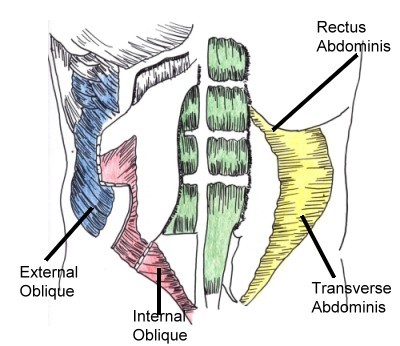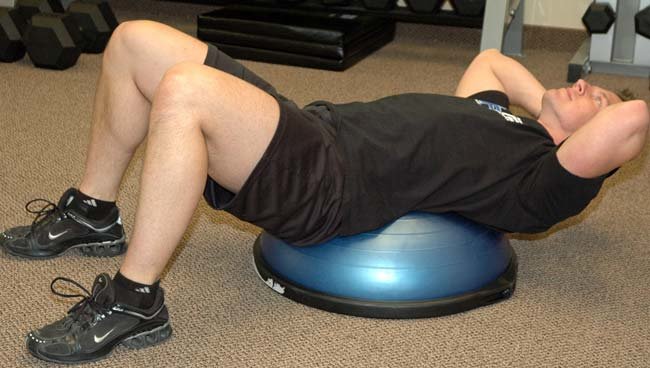Hello again. So, I have been on a writing hiatus for a
while, although meaning to attempt this article/post about three weeks ago, for
a couple of reasons. First, three weeks ago I got sick after training; it was
an interesting sick. I didn’t ever feel like vomiting, but I my body
temperature was very high, my back ached, and my joints would stiffen up while
I slept the sickness off and then pop when I woke up. The reason I didn’t write that weekend is because of
just that, I was sleeping my sickness off. The second reason, and it ties into
the first, is that I had a competition the following weekend in Indianapolis.
It was a great competition and I felt awesome, minus a cough that stuck with
me. I ended up placing second and qualifying for nationals which will be held
later this year. I was happy with second place because I performed about as
well as I could have.
Anyways, on to the post.
This post will be on the method that I have been using for
the training of me and a few others around me that I train or help train on a
regular basis. Let me first put my disclaimer out there that I am a very
intuitive when I train and when I coach, so there are some aspects of what I do
that I am not yet able to articulate –I will, however, work to do so in later
posts.
This method is something I call set-matching. It was first
brought to my attention about a year and a half ago by a buddy of mine,
Graciano Rubio. He told me about an article that he had read by Pavel Tsatsouline
talking about doing what we now call set-matching as a way to change up the
reps that you are doing; in essence, to stave of becoming bored with your rep
schemes. Well, I decided that I would try that. My brother, myself, Jeff, and
Graciano every so often, would use this to train a couple different exercises
each day that we were in the weight room. We really enjoyed it because of how
we felt and the progress we were seeing. Well, that Christmas break I wrote up
a workout that was twice a day for six of the ten day workout. We used set-matching
for squatting, deadlifting, RDLing, front pressing, push pressing, pull ups,
and pushups; during this ten day period I squatted nearly 100,000kg –in only my
work sets– and my total work set loads for all the lifts combined was around
330,000kg. On the last day I was going as many matching sets as I could until
failure with my bodyweight on the bar, 100kg. Because of the training, I was
able to do 20 sets (even after doing 15 sets of my bodyweight on front squat
the day before) and on the 21st set, I did 50 reps of my bodyweight
for a total of 240 reps at my bodyweight and 24,000kg of tonnage done. It was
quite the ten day span leading up to Christmas.
I have not looked back since that Christmas break back in
2011 and my strength has benefitted greatly because of it. I have also been
able to work and refine the set-matching method and use it to increase my
strength in nearly every aspect of training. The one major con to set-matching is
that is can take a long time because of the fact that warm ups sets do not
count and because you can end up doing a lot of work sets; other than that, I
have had no complaints other than that it is uncomfortable and hard. Oh well.
Get used to being uncomfortable if you want to get better. A coach I work with
who produces some of the strongest athletes I have ever seen once told me, “An
athlete must be willing to suffer in order to taste success.” I don’t know if
that is his quote or not, but I liked it.
Since that Christmas break, I have come to use set-matching with
most any exercise that I do. It is silly to use with some exercises, such as
bicep curls, but if you want to see improvements in an exercise, set-matching
can be successfully used. You can use set-matching with almost everything; I
use set-matching with the power clean and jerk, clean and jerk, snatch, power
snatch, squats, deadlifts, RDL’s, overhead pressing, pull ups, pushups, bench
press, sprinting and different strongman events. Another great aspect of it is that you can use
it to compete with a partner. They don’t have to be as strong as you, they just
need to set up next to you with their respective weight; once you do that, you
each set-match until someone can’t go any higher, then you start again. Or, if
you aren’t looking to die each day or use the competition aspect too often, you
can use a partner to monitor each other’s rest periods instead.
Some things that I have found are that set-matching seemingly
to delay the onset of the mental fatigue that comes with high numbers of work
sets therefore allowing you to do more sets, you can use it for size or
strength, it can (and most likely will) increase your work capacity, and it can
increase your confidence in your strength and abilities –a much larger part of
lifting than most people give credit too. The mental aspect of set-matching is
just this: say you have been prescribed 8 sets for your first time through and
4 sets for your second time through –being 1-8 and 1-4 respectively–; how nice
is it to think that after that set of eight, you only have one rep to start
with and only go up to half as many reps the second time through? I understand there are other ways of looking at those sets, but let's try to stay positive. The increase
in work capacity comes from the amount of rest that you do and don’t get.
Generally, if you aren't lifting with a partner, your rest should be similar to
the amount of time that it just took to do the set. This increases work
capacity because of the fact that you are resting less than you are going to be
going on your next set…that is, until you start over again at one. Another
little thing that can be done is resting a few minutes between your first and
second, and on rare occasions, second and third time through. With heavier
weights and set-matching, however, you will want to work more on the lifting
and mental preparation part of it than you will the work capacity part of it;
it then becomes more of a confidence booster (at least for me) because of the
fact that you are not only doing an incredibly heavy weight once, you could be
doing it up to three times as well as getting under the weight many different
times (often 6-8 different times if I am training heavy). By the time those
three rep or one rep maxes come around they almost seem easy. One set of three
reps? One set of one rep? What? That is easy. My body can handle that if it
could handle six sets of a weight that is just under my three rep or three to
five sets that are just a bit under what I am trying to one rep.
As far as prescribing sets and weights goes, I do not prescribe weights anymore. I tried to prescribe weights with set-matching and that failed pretty miserably. Set-matching is great because you do a work-weight for the day, but hopefully it is heavier or better in some way than the previous similar lifting day. When I prescribe sets, I will still taper them for a max, or whatever the goal is, but it is more of a pyramid program if you look at the number of sets being prescribed. Initially, I will give them, or myself, sets of 1-8 for one time through on strength movements and, only for me and a select few people that I train, 1-4 on the Olympic lifts. I will then begin progressing along by dropping the number of reps that they will end with, but they will still be doing eight sets for the first part of the program. I will then increase the number of sets as the number of reps keeps dropping. Finally, the sets will drop down to something like 1-3x2 or 1-2x4, so you are doing fewer sets, fewer reps, but seriously heavy weight. After this point in the program I will usually drop down to about four sets or five sets of 1-2 reps, possibly a 3 rep max, and then finally they will work to find their one rep max. I have also come to add variation such as bands and different implements to set-matching as well in these past
few months and seen bigger gains and the post with those nuances will come
sometime in the future; however, if you have any questions about it, please feel free to ask
me whatever you’d like about my workouts or training method. My disclaimer for
this is that unless you have been doing set-matching for quite a while and are
a well-trained individual, you do not add this variety in.
Like I said before, I have only empirical evidence and videos showing that for
me, and those that I have trained using this method, it works– the numbers speak for
themselves.
Here are a couple examples of set matching below. The first will be light prescribed sets that goes until failure and the second will be heavier prescribed sets that are used more for strength.
Failure Sets on a back squat. Prescribed sets 1-Fail (Match to Fail):
Warm Up: 135lbs x10
225lbs x8
315lbs x6
Start Set-Matching: 385lbs x1
Then my partner goes, or I rest about 10 seconds
385lbs x2
Then my partner goes or I rest about 15-18 seconds
385lbs x3
Then my partner goes or I rest about 23-25seconds
385lbs x4
.........
385lbs x10
This continues until one of us either fails during a set or one of us knows that we will fail during the upcoming set. When this happens, we get some water, rest a couple minutes, then start again at one and work our way up again. Now, sets can be prescribed until failure, as above (being written 1-Fail or Match to Fail), or it can be just prescribed sets in which the person will do for two or so weeks looking to get more weight for the same amount of sets than they did the week prior.
Heavy Sets of deadlift. Prescribed sets 1-4, 1-3, 1-2:
Warm Up: 70kgs x10
120kgs x8
170kgs x6
220kgs x4
260kgs x2
Start Set-Matching: 285kgs x1
Rest 30-45 seconds or as long as my partner takes do the prepare and do the set
285kgs x2
Rest 1:00-1:15 or as long as my partner takes do the prepare and do the set
285kgs x3
Rest 1:30-2:00 or as long as my partner takes do the prepare and do the set
**Take your time before this next set as it is a very heavy weight for the highest number of reps**
285kgs x4
Rest a couple minutes, drinks some water, get mentally ready to do it all again...
285kgs x1
Rest 30-45 seconds or as long as my partner takes do the prepare and do the set
285kgs x2
Rest 1:00-1:15 or as long as my partner takes do the prepare and do the set
285kgs x3
Rest a couple minutes, drinks some water, get mentally ready to do it all again...again...
285kgs x1
Rest 30-45 seconds or as long as my partner takes do the prepare and do the set
285kgs x2
So, there is your introduction to set-matching everybody. Now go forth, match your sets and enjoy your suffering!
Chris










